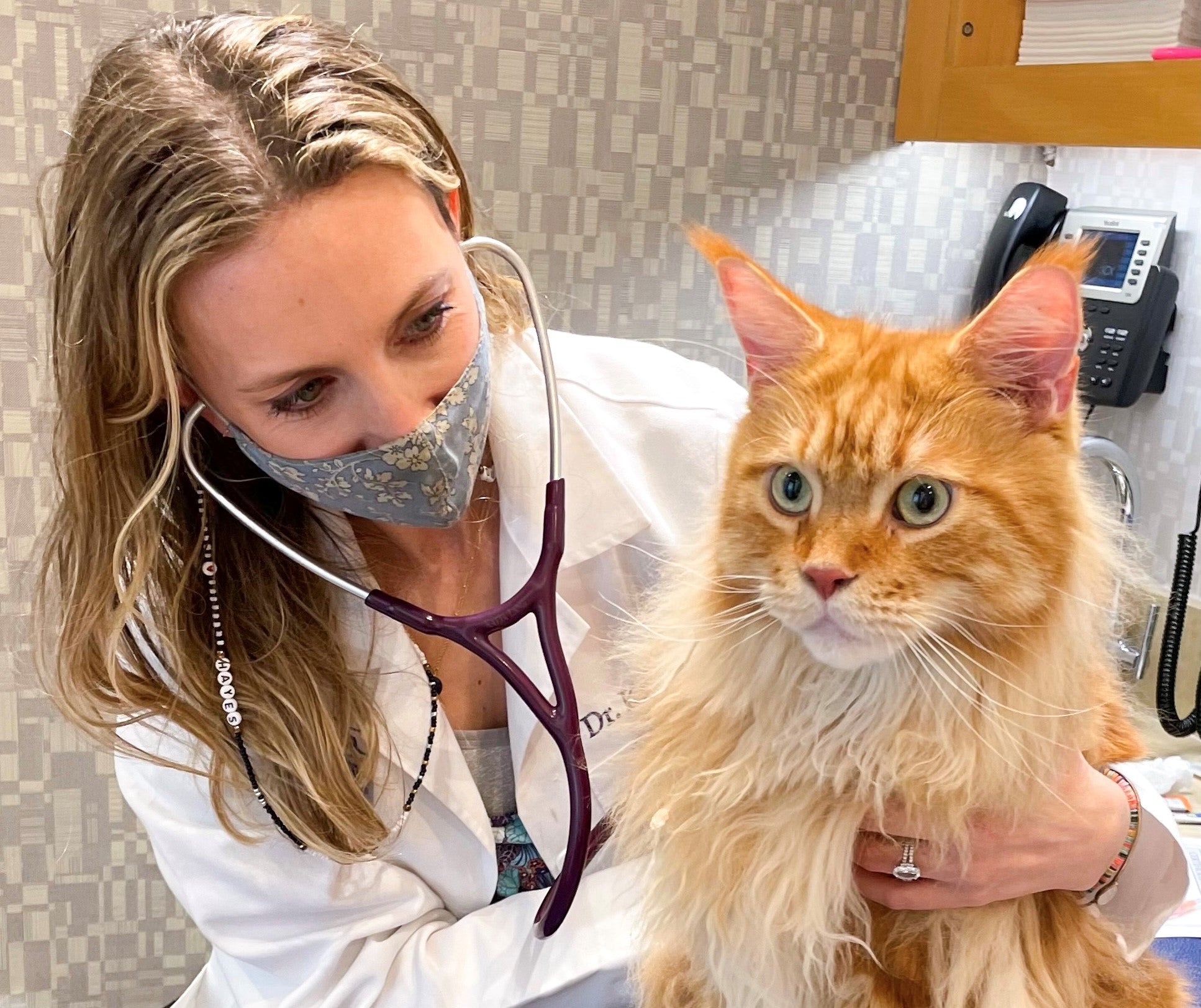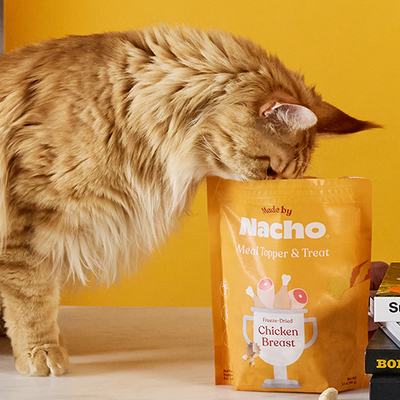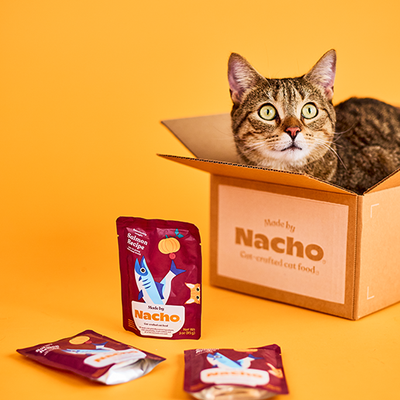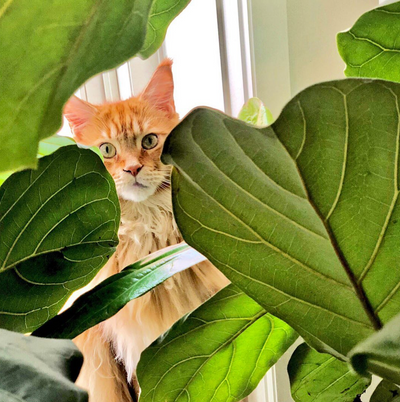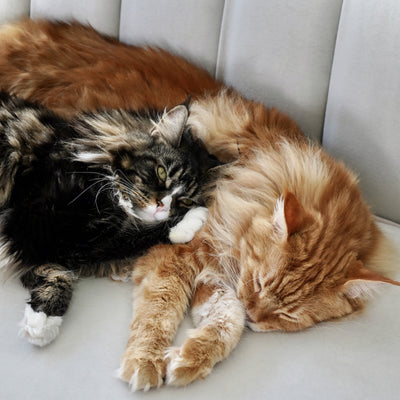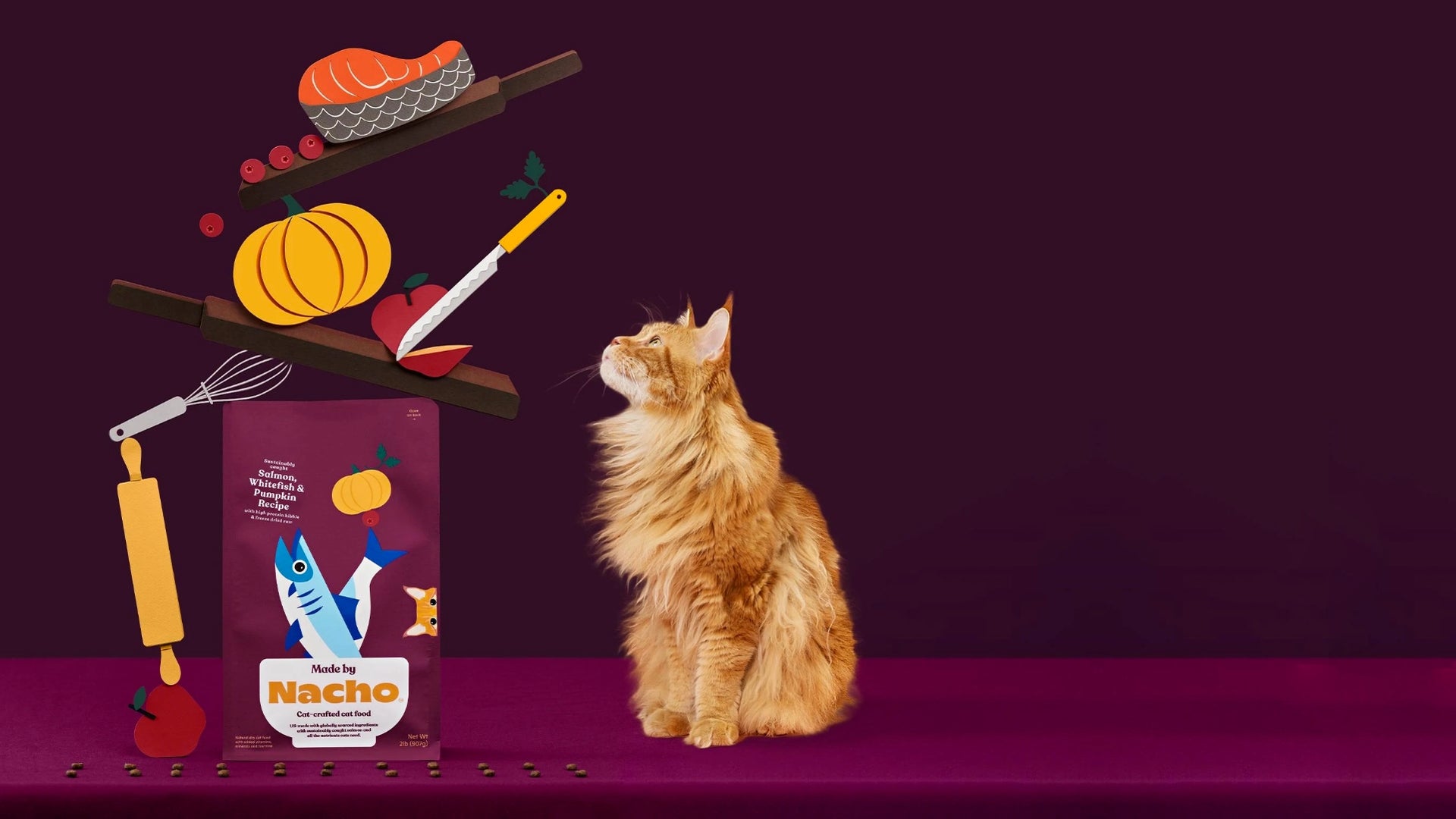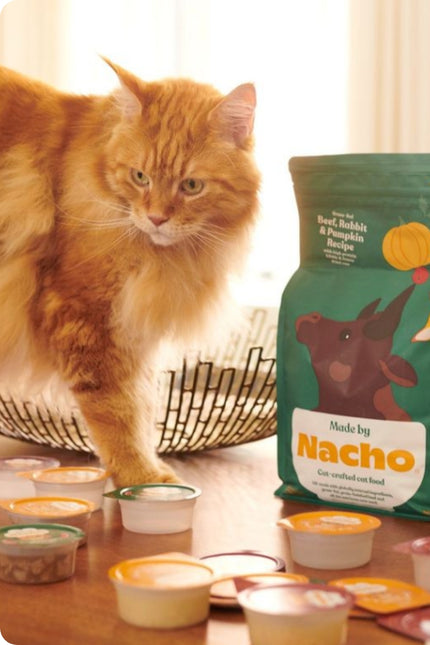If you follow Nacho Flay on social media, you may recognize his lifelong vet, Dr. Katja Lang, DVM. Since she's known Nacho since his smaller, floofier days, she’s all-too-familiar with his passion for food, which is precisely why he and Bobby tapped her to be Made by Nacho's veterinary consultant.
Dr. Lang is an integral part of Made by Nacho; she works closely with Nacho and Bobby to develop our recipes. As an expert in feline health with an emphasis on nutrition, Dr. Lang provides invaluable insight on what is best for feline diets, starting with flavor—because, as any parent of a finicky cat knows, if the food doesn't taste good, the cat won't be interested. She helps us ensure our recipes are complete and balanced, providing the right amount of protein, fiber, and antioxidants to help cats thrive.
While we work with Dr. Lang regularly for all things Made by Nacho, we wanted to learn about her other role—Chief Medical Officer at Heart of Chelsea Veterinary Clinic. So we sat down for a virtual Q&A, and while we were at it, got some sage advice for cat parents and the scoop on Nacho and Stella.
Made by Nacho: When did you know you wanted to be a veterinarian?
Dr. Lang: When I was 5. I grew up next to a veterinary surgeon who often rehabilitated baby wild animals at home; my fascination with the profession grew from there. I knew becoming a veterinarian was the only career path for me. I solidified my dream by working at vet offices starting in high school and worked my way up!
MBN: What does it mean to be a Chief Medical Officer?
DL: I am responsible for ensuring our doctors and staff practice the medical gold standard our clients at Heart of Chelsea have come to trust. I make sure we have the best technology and up-to-date advancements in the veterinary world, from new tests to new medication or different approaches to managing disease.
MBN: What’s a typical workday like?
DL: Most days I spend seeing my patients for appointments ranging from healthy wellness visits for routine blood work and vaccines to sick visits and emergency cases. I am scheduled for surgical cases only one day a week, so I spend that day doing surgery and dentistry. The days are busy and fly by!
MBN: We noticed your website said Heart of Chelsea is fear-free certified. What does that mean?
DL: Fear free™ is an online education tool for veterinary professionals. There are multiple levels you can become certified in. The goal of the course is first to recognize signs of FAS (fear anxiety and stress in our animal patients) and second to learn ways to minimize FAS. To become an officially Fear Free certified clinic, most employees will be certified in Fear Free techniques.
MBN: Do you have any pets?
DL: I have two dachshunds. I would LOVE to have a cat, but, sadly, my husband is allergic.
MBN: What do you wish cat parents/pet parents knew about their pets?
DL: One of the most important things to know is that cats hide their illnesses and/or pain. We can’t depend only on their clinical signs to tell us if something is bothering them. Cats don’t always show signs like pain, lethargy, changes in appetite are not always seen even when something is wrong. That’s why it’s important for cat owners to be attuned to subtle changes, decreased sociability, fewer interactions with owners, decreased activity levels, and not as enthusiastic about eating.
MBN: How often should I take my cat to the vet, for real though?
DL: Once a year when they are healthy and young (less than 8) and twice a year after 8 years of age.
MBN: How magnificent is Nacho on a scale of 1 - 10? What about Stella?
DL: 10 and 10!
Dr. Lang’s Most Frequently Asked Questions:
What should I feed my cat?
- You should feed your cat a complete and balanced diet that meets all the AAFCO nutritional requirements. High quality ingredients are also very important!
- I prefer a mostly wet cat food diet for cats to ensure they maintain adequate hydration and have higher levels of protein. Then I use dry cat food as snacks/treats
How can I get my cat to drink more water?
- Feed a wet cat food diet with added water if it is not already a soupy consistency
- Running water fountains
- Extra small cups/bowls with easy access to drink in quiet area of the house
- Flavor water with a small amount of chicken broth or tuna juice
What treats are safe to give?
Is vomiting “normal” for my cat?
- An occasional vomit from cats if they eat too quickly can be “normal.” No more than 1x per month
